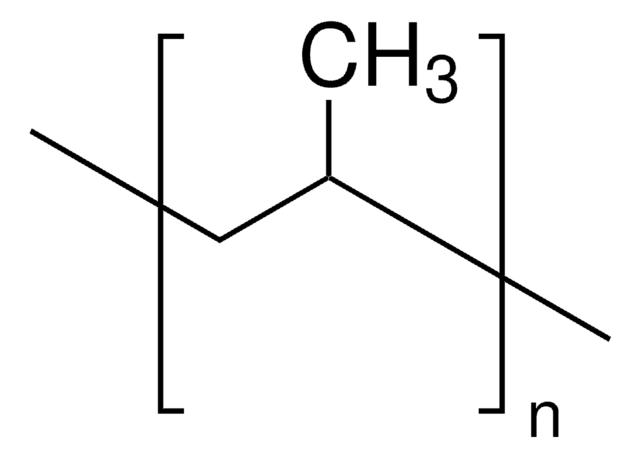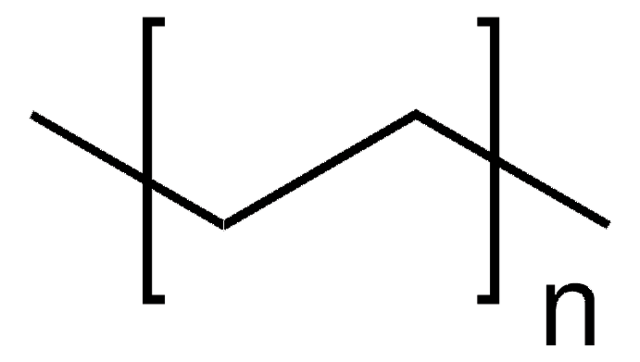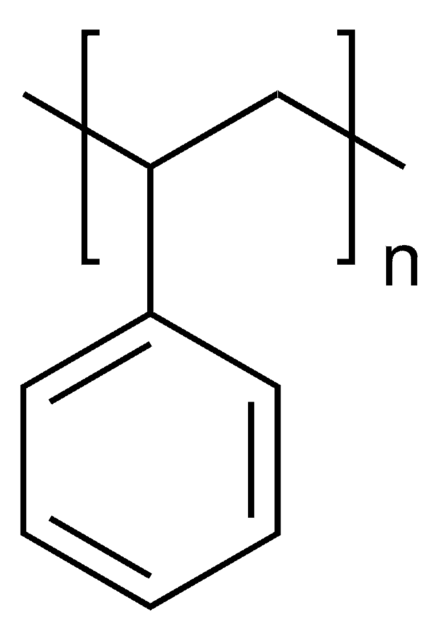427861
Polypropylene
Isotactic, average Mw ~340,000, average Mn ~97,000
About This Item
Produtos recomendados
Formulário
beads
índice de fusão
4 g/10 min (230°C/2.16kg)
peso molecular
average Mn ~97,000
average Mw ~340,000
dureza
99 (Rockwell R, ASTM D 785-A)
temperatura de transição
Tm 160-165 °C
densidade
0.9 g/mL at 25 °C (lit.)
aplicação(ões)
battery manufacturing
cadeia de caracteres SMILES
CC=C
InChI
1S/C22H42O3/c1-2-3-4-5-11-14-17-20-21(25-20)18-15-12-9-7-6-8-10-13-16-19-22(23)24/h20-21H,2-19H2,1H3,(H,23,24)/t20-,21+/m1/s1
chave InChI
NSYDMBURIUSUDH-RTWAWAEBSA-N
Procurando produtos similares? Visita Guia de comparação de produtos
Aplicação
Características e benefícios
Código de classe de armazenamento
11 - Combustible Solids
Classe de risco de água (WGK)
WGK 3
Ponto de fulgor (°F)
Not applicable
Ponto de fulgor (°C)
Not applicable
Equipamento de proteção individual
Eyeshields, Gloves, type N95 (US)
Escolha uma das versões mais recentes:
Já possui este produto?
Encontre a documentação dos produtos que você adquiriu recentemente na biblioteca de documentos.
Nossa equipe de cientistas tem experiência em todas as áreas de pesquisa, incluindo Life Sciences, ciência de materiais, síntese química, cromatografia, química analítica e muitas outras.
Entre em contato com a assistência técnica


